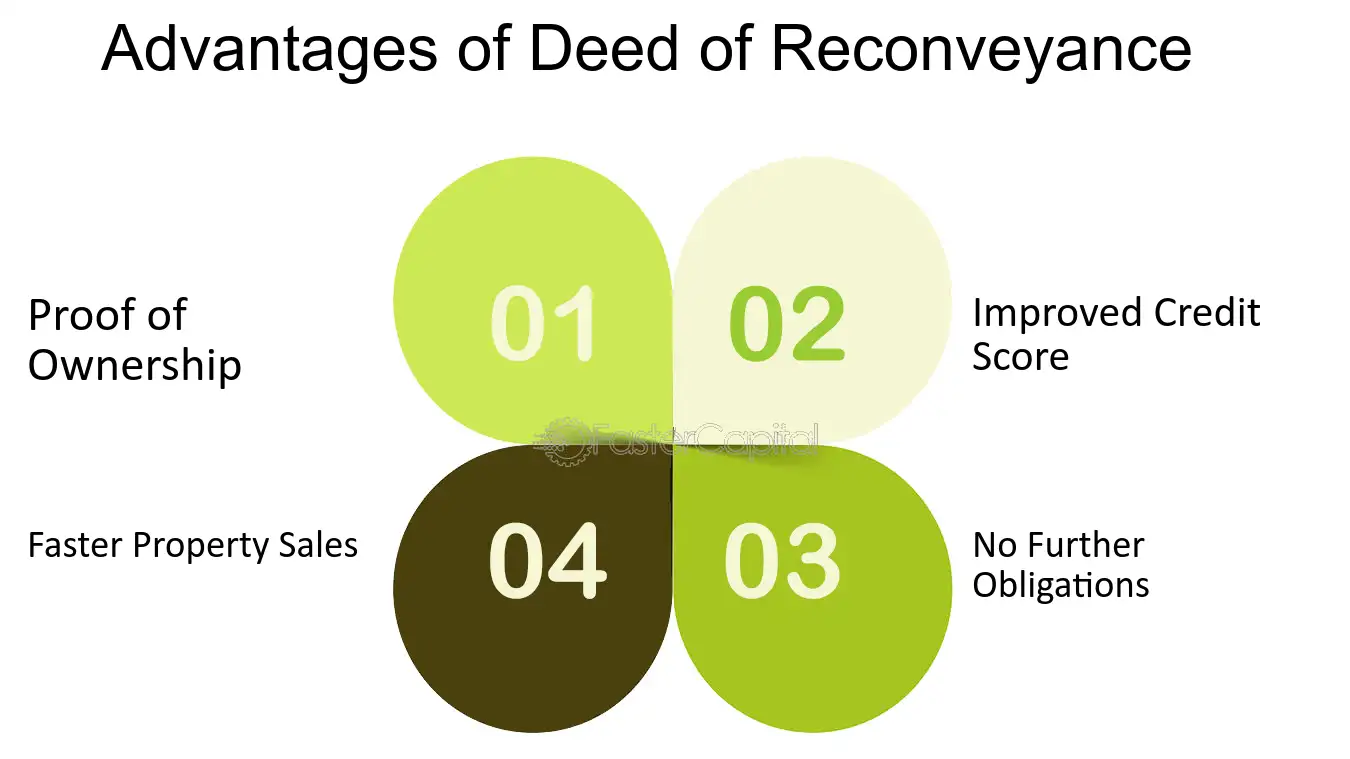What is a Deed of Reconveyance?
A Deed of Reconveyance is an important legal document that is used in the mortgage process. It is a document that is executed by the lender once the borrower has fully repaid their mortgage loan. This document serves as proof that the borrower has fulfilled their financial obligations and that the lender no longer has any claim to the property.
When a borrower takes out a mortgage loan, they are essentially using their property as collateral for the loan. The lender holds a lien on the property, which gives them the right to take possession of it if the borrower fails to repay the loan. However, once the borrower has fully repaid the loan, the lender’s claim on the property is released through the execution of a Deed of Reconveyance.
It is important for borrowers to understand the significance of the Deed of Reconveyance. Once this document is recorded, the borrower becomes the sole owner of the property, free and clear of any liens or claims by the lender. This means that the borrower has full control over the property and can sell, transfer, or refinance it without any restrictions imposed by the lender.
Common Questions about Deed of Reconveyance
What is a Deed of Reconveyance?
A Deed of Reconveyance is a legal document that is used to transfer the title of a property from the lender back to the borrower once a mortgage loan has been fully paid off. This document serves as proof that the borrower has fulfilled their financial obligation and that the lender no longer has any claim on the property.
How is a Deed of Reconveyance different from a Deed of Trust?
A Deed of Trust is a document that is used to secure a mortgage loan. It gives the lender a legal interest in the property as collateral for the loan. On the other hand, a Deed of Reconveyance is used to release the lender’s interest in the property once the loan has been paid off in full.
Who prepares the Deed of Reconveyance?

In most cases, the lender is responsible for preparing the Deed of Reconveyance. They will typically work with a title company or an attorney to draft the document and ensure that it complies with all the necessary legal requirements.
How long does it take to receive a Deed of Reconveyance?
The timeline for receiving a Deed of Reconveyance can vary depending on the specific circumstances and the efficiency of the lender. In some cases, it may take a few weeks to a few months to receive the document after the loan has been paid off. It is important for borrowers to follow up with their lender to ensure that the process is being completed in a timely manner.
What should I do with the Deed of Reconveyance once I receive it?
Once you receive the Deed of Reconveyance, it is important to keep it in a safe place. This document serves as proof that you have satisfied your mortgage loan and that the property is fully yours. It is recommended to make copies of the document and store them in a secure location, such as a safe deposit box or with your attorney.
| Question | Answer |
|---|---|
| What is a Deed of Reconveyance? | A Deed of Reconveyance is a legal document that transfers the title of a property from the lender to the borrower once a mortgage loan has been fully paid off. |
| How is a Deed of Reconveyance different from a Deed of Trust? | A Deed of Trust is used to secure a mortgage loan, while a Deed of Reconveyance is used to release the lender’s interest in the property once the loan has been paid off. |
| Who prepares the Deed of Reconveyance? | The lender is usually responsible for preparing the Deed of Reconveyance. |
| How long does it take to receive a Deed of Reconveyance? | The timeline can vary, but it may take a few weeks to a few months to receive the document after the loan has been paid off. |
| What should I do with the Deed of Reconveyance once I receive it? | It is important to keep the document in a safe place and make copies for storage in a secure location. |

Emily Bibb simplifies finance through bestselling books and articles, bridging complex concepts for everyday understanding. Engaging audiences via social media, she shares insights for financial success. Active in seminars and philanthropy, Bibb aims to create a more financially informed society, driven by her passion for empowering others.
